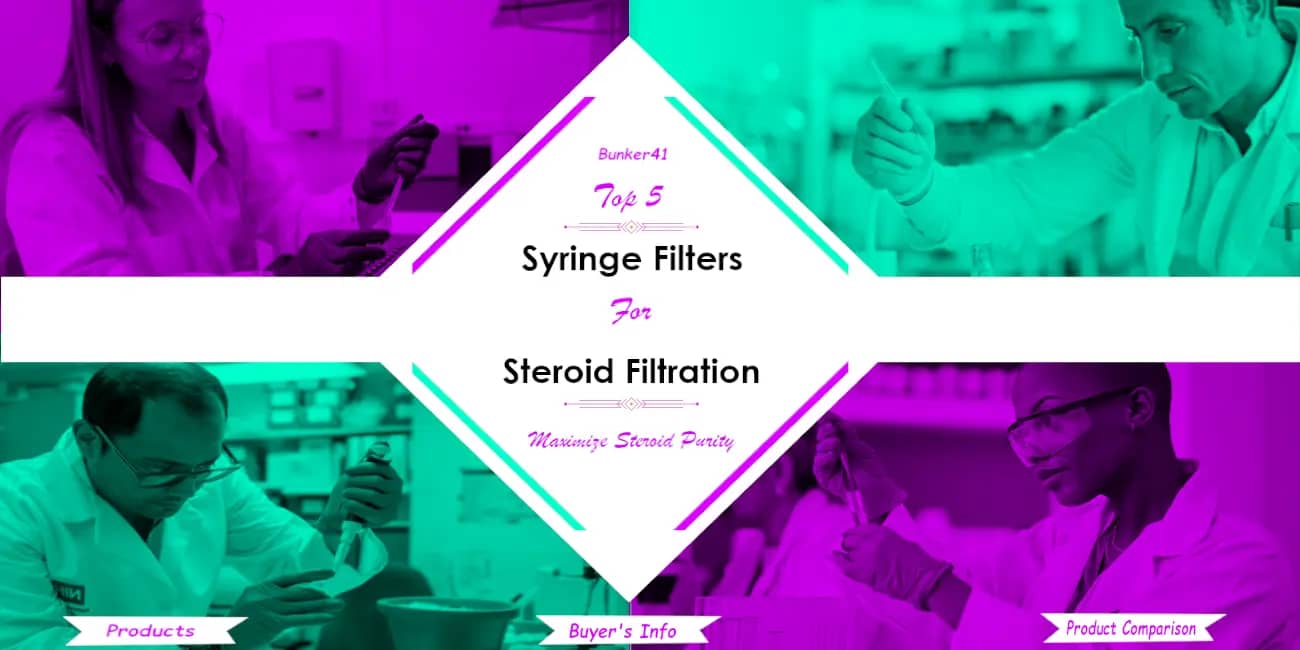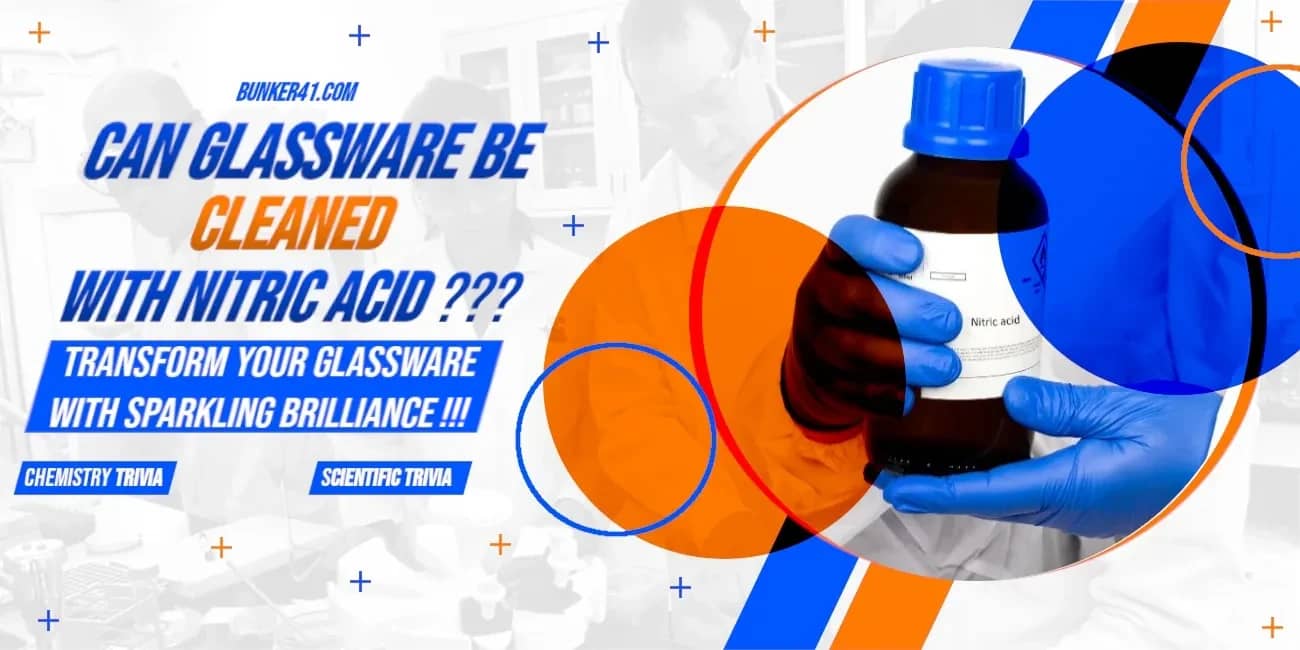Your cart is currently empty!

Top 5 Syringe Filters for Steroid Filtration – Maximize Steroid Purity
Introduction
Did you know that up to 37% of lab contamination happens during sample prep? Syringe filters are key in removing tiny impurities. They ensure precise steroid filtration for research and medicine.

An introduction to syringe filters highlights their essential role in sample preparation and sterilization filtration, designed to remove particulate impurities, bacteria, and moisture from aqueous samples, organic solvents, or even gas filtration streams. These membrane‑based filters, typically made of polypropylene housings with membranes such as PTFE, nylon, PES, PVDF, cellulose acetate, or glass microfibre, are selected based on chemical compatibility, pore sizes (commonly 0.1, 0.2/0.22, 0.45 μm), and burst pressure or bubble point—key factors to ensure bacteria removal and particle removal without compromising flow rate or causing high protein binding. For instance, non sterile syringe filters offer cost‑effective options for routine liquid sample clarification, while sterile syringe filters support sterilization of solutions and solvent purging in HPLC sample preparation, with minimal hold up volume and low protein binding properties. Applications range from filtering strong acid or aggressive compounds using PTFE for organic solvents, to treating biological fluids with hydrophilic nylon or PES membranes that balance particle removal and protein recovery, and even specialized gas filtration where air vents help prevent moisture passing through. The choice of membrane materials, filter diameter, flow rate, chemical compatibility, and low protein binding profiles ensures optimal performance across diverse samples, components, and filtration demands.
Key Takeaways
Understanding the Importance of Syringe Filters in Steroid Preparation
An understanding of the importance of syringe filters in steroid preparation underscores their critical role in safe and effective hormone compounding. During sample preparation, best syringe filters for steroid filtration—often sterile syringe filters with pore sizes of 0.22 μm or 0.45 μm—are essential for particle removal, bacteria removal, and elimination of particulate impurities to ensure injectable solutions are free of contamination. Typically constructed with polypropylene housings and membranes made from nylon, PES, PTFE, or PVDF, these filters are chosen based on chemical compatibility with organic solvents or aqueous samples, low protein binding, and resistance to strong acid or harsh compounds. In steroid prep, using non-sterile syringe filters may suffice for clarifying oil or solvent-based samples, but sterilization filtration using sterile syringe filters is essential before injection to ensure filtered solutions meet microbiological safety standards. Performance parameters such as burst pressure, bubble point, flow rate, and minimized hold up volume are vital to maintain efficient filtering and conserve valuable steroid materials . Whether dealing with glass microfibre or regenerated cellulose membranes, or incorporating air vents to prevent moisture passing in gas filtration, selecting the proper filter membrane ensures consistent filtration of particles, moisture, and bacteria, producing high‑quality, injectable steroid solutions.
What are Syringe Filters?
Syringe filter membranes are made to catch tiny particles in liquids. They are crafted from materials like polyethersulfone or nylon. These filters have tiny pores that block unwanted particles, letting clean liquid through.
Why Purity Matters in Steroid Filtration
Precision filtration is the key to pharmaceutical-grade steroids.
Keeping steroid solutions pure is vital. Impurities can harm both safety and effectiveness. Using non-sterile syringe filters can add harmful particles, affecting the quality and performance of the final product.
Common Contaminants in Steroid Solutions
Steroid solutions can have many impurities. These include:
| Contaminant Type | Typical Pore Size Needed for Removal |
|---|---|
| Bacteria | 0.45 micron |
| Fine Dust Particles | 0.2-0.45 micron |
| Manufacturing Residue | 0.45 micron |
Choosing the right syringe filter is all about understanding pore size. Filters with 0.45 micron specifications are best. They remove microorganisms, keeping your steroid solution safe and pure.
Key Features to Look for in Syringe Filters
Choosing the right syringe filter is key for top-notch purity in steroid making. The right filter affects how well it filters, removes contaminants, and keeps your sample safe. Knowing what to look for helps you pick wisely. Here’s a list of key features to look for in syringe filters:
For optimal filtration, especially in steroid solution prep, look for filters that combine:
These features help ensure clean, sterile filtered solutions free from particulates, contamination, and microbial threats—making them the best syringe filters for steroid filtration.
Pore Size Selection
The size of the filter’s pores is vital for getting rid of bacteria and keeping out unwanted particles. Here are the top sizes for filtering steroids:
Understanding Common Pore Sizes
An understanding of common pore sizes in syringe filters—typically 0.45 μm and 0.2/0.22 μm—is vital for optimizing filtration in diverse sample preparation scenarios. A 0.45 μm pore size excels at particle removal and eliminating particulate impurities in aqueous samples, organic solvents, or even gas filtration, offering lower burst pressure, broader flow rate, and lower cost. Conversely, 0.2/0.22 μm membranes are classified as sterilization filtration or sterile syringe filters, capable of bacteria removal (especially pathogens like Brevundimonas diminuta), and often validated via bubble point testing to guarantee reliable sterility at high pressure. These finer pore sizes are essential when preparing liquid samples for injectable use or analytical techniques (e.g., UHPLC), where low protein binding membranes like regenerated cellulose, glass microfibre, or nylon minimize protein or component loss while maintaining chemical compatibility and acceptable hold up volume. In contrast, coarser or specialized other membranes (e.g., glass microfibre prefilters, 0.7–3 µm) reliably tackle high-load samples to purge bulk particles, preserving downstream finer filters and extending their lifespan. Choosing the right filter, membrane, and pore sizes ensures efficient filtered solutions, minimized contamination, and optimal retention of proteins and valuable components.
Comparing Pore Sizes: What’s Best for Steroid Filtration?
When choosing the best syringe filters for steroid filtration, selecting the right pore size is crucial: a 0.22 μm syringe filter is widely recommended for sterilization filtration because it effectively removes bacteria and particulate impurities, ensuring solution sterility—perfect for aqueous samples or organic solvents in steroid prep. For broader particle removal or prefiltration, a 0.45 μm pore size is often sufficient and speeds up flow rate while reducing hold up volume. Membranes like hydrophobic PTFE (excellent for gas filtration, strong acid, and solvent compatibility) or PES and regenerated cellulose (noted for low protein binding) offer varied chemical compatibility, burst pressure, and bubble point characteristics. Filters with glass microfibre prefilters enhance capacity and lifespan by handling high load particulates. Additionally, non sterile syringe filters can be used for general sample preparation, but sterile versions (gamma-irradiated, low contamination) are essential for bacteria removal and maintaining filtering integrity. Ultimately, for steroid solutions one typically opts for a 0.22 μm syringe filter membrane made from a compatible material (like PTFE for solvents or PES/RC for low protein loss), ensuring filtered solution is free of moisture, particles, and microbes—delivering clean, injectable-quality components.
What is the Best Pore Size for Steroids?
Here’s a well-sourced and keyword-rich list on What is the Best Pore Size for Steroids:
“Choosing the right pore size is not just about filtration, it’s about preserving your steroid’s purity and quality.”
How Pore Size Affects Filtration Efficiency
The size of the membrane’s pores affects several important things:
Material Considerations
Membrane materials have special benefits for keeping moisture out and keeping your sample safe:
| Membrane Type | Key Characteristics |
|---|---|
| PVDF | Low protein binding, perfect for HPLC sample filtration |
| PES | Low drug binding, great for life science uses |
| Cellulose Acetate | Hydrophilic, best for water-based protein solutions |
Sterilization and Pre-sterilized Options
When filtering steroids, keeping everything sterile is crucial. Think about these important points:
Pro tip: Always pick filters with low protein binding to get the most out of your sample and avoid interference.
Takeaway: The best syringe filters for steroid filtration are pre‑sterilized, 0.22 µm sterilizing-grade filters made from low protein-binding, chemically compatible membranes (like PES, PVDF, or PTFE). Choosing the right pore size, housing diameter, and certifications ensures high‑performance filtration with minimal loss of valuable samples and exhaustive contamination control. By looking at pore size, material, and sterilization, you can find syringe filters that make your steroid preparations as pure as possible.
The Top 5 Syringe Filters for Steroid Filtration
Choosing the right syringe filter is key for top-notch purity in steroid prep. These filters are vital for removing impurities and ensuring clean solutions. Knowing the differences between top brands helps you pick wisely. Look at air vents, membranes, and materials when picking syringe filters. Glass microfibre and regenerated cellulose have special benefits for prep work.
1. Biomed Scientific PTFE 25 mm 0.22 µm
When it comes to filtering high-purity steroid solutions, Biomed Scientific’s PTFE 25 mm 0.22 µm syringe filter stands out as one of the best syringe filters for steroid filtration—particularly for home-brewers working with organic solvents and aggressive chemicals. Constructed with a hydrophobic PTFE membrane, this syringe filter is specifically engineered to prevent moisture passing, making it an ideal choice for gas filtration and non-aqueous solutions. The 0.22 µm pore size ensures exceptional bacteria removal, efficient particle removal, and minimal particulate impurities during sample preparation, without compromising flow rate or structural integrity under high pressure. Its broad chemical compatibility extends to strong acids, bases, and volatile organic solutions, thanks to the robust PTFE material and chemically inert polypropylene housing. The high burst pressure, low hold up volume, and excellent bubble point further contribute to reduced contamination and consistent throughput when filtering steroids. Unlike non sterile syringe filters with generic syringe filter membranes, this Biomed unit ensures precise filtration while resisting clogging—even with viscous solutions. Although it’s not suitable for aqueous samples, the Biomed PTFE filter’s performance in filtration of oils and solvents gives it a distinct edge for underground lab chemists and DIYers purifying hormone suspensions or filtering liquid samples for post-reconstitution use. Whether you’re working with testosterone enanthate, trenbolone acetate, or another lipid-soluble compound, this syringe filter brings pharmaceutical-level reliability to your lab bench—one filtered sample at a time.
Buy On Amazon- Outstanding chemical compatibility with organic solvents, making it ideal for steroid filtration.
- Hydrophobic PTFE membrane prevents water intrusion—perfect for gas filtration or volatile solutions.
- High bubble point and burst pressure, ensuring filtration safety and integrity.
- Durable construction allows for consistent filtration without ruptures or clogging.
- Excellent for sample preparation involving non-aqueous and volatile solutions.
- Not suitable for aqueous samples due to hydrophobic membrane—may require pre-wetting with alcohol if used with water-based solutions.
- Non sterile by default, requiring users to sterilize before critical applications.
- Slightly higher cost per unit than generic filters, especially in small quantity packs.
- May over-filter solutions with high protein binding, unless used with low-protein compounds.
The Biomed Scientific PTFE 25 mm 0.22 µm syringe filter earns top marks for users working with oil-based steroids, organic solvents, and non-aqueous sample filtration. Its hydrophobic membrane, robust chemical resistance, and low hold-up volume make it an elite tool in DIY steroid filtration setups. While it’s not your go-to for aqueous samples or highly proteinaceous materials, it delivers elite-level precision, safety, and consistency where it matters most.
2. Ks‑Tek Clear Reusable Syringe Filter
If you’re seeking a filtration solution that blends long-term economy with lab-grade reliability, the Ks‑Tek Clear Reusable Syringe Filter carves out a unique niche among the best syringe filters for steroid filtration. While most filters in this space are single-use and disposable, Ks‑Tek’s reusable design offers DIY compounders an alternative that’s both eco-conscious and economically sound. Engineered with a clear, pressure-tolerant shell and swappable syringe filter membranes, this filter allows users to clean, sterilize, and reuse the unit across multiple filtration cycles—ideal for batch processing of liquid samples, oils, and other organic solvents. The flexibility to insert your choice of membranes—whether PTFE for hydrophobic gas filtration, nylon for broad-spectrum chemical compatibility, or regenerated cellulose for aqueous samples—means the Ks‑Tek system supports a wide range of sample preparation workflows. Its compatibility with strong acids, solvents, and delicate proteins is contingent on your selected membrane, giving advanced users total control over bubble point, low protein binding, burst pressure, and particulate impurities during filtration. With a generously sized filter body, low hold up volume, and user-friendly assembly, the Ks‑Tek syringe filter reduces contamination risks while offering consistent particle removal and pressure handling comparable to high-end polypropylene units. Though it requires more technical know-how—especially around sterilization, membrane sourcing, and solution compatibility—it rewards meticulous users with high-throughput capability and considerable cost savings over time. For those who understand the science behind filters, filtration, and the dynamics of membrane-based purification, Ks‑Tek offers a customizable platform that blends practicality with precision—especially for those filtering samples in bulk or fine-tuning multiple steroid formulations.
Buy On Amazon- Cost-effective for frequent users—reuse the housing and swap only membranes.
- Supports a wide range of filtration needs depending on membrane choice (from aqueous samples to organic solvents).
- Customizable bubble point, chemical compatibility, and flow rate.
- Transparent body makes sample preparation and flow visibility easy.
- Great training tool for users learning pressure management, membrane selection, and filtration mechanics.
- Requires manual sterilization between uses (e.g., autoclave, ethanol soak).
- Not suitable for sterile applications unless properly sanitized.
- Higher risk of contamination if disassembled or reassembled incorrectly.
- Membrane performance may degrade if reused or handled improperly.
- Less convenient for one-off, small-volume liquid samples.
The Ks‑Tek Clear Reusable Syringe Filter is a game-changer for advanced users who want full control over their filtration workflow—from membrane selection to sterilization. While it’s not beginner-friendly and demands more technical finesse, its flexibility, customizability, and long-term cost savings make it a powerful tool for high-volume steroid filtration and beyond. For skilled compounders and lab techs who understand the chemistry of samples, membranes, and pressure dynamics, this unit delivers unmatched versatility. It’s not just a filter—it’s a customizable filtration system in the palm of your hand.
3. Labfil Sterile Syringe Filter 0.22 µm
When precision meets sterility, the Labfil Sterile Syringe Filter 0.22 µm delivers uncompromising performance—positioning itself among the best syringe filters for steroid filtration, especially for users prioritizing contamination-free workflows. Designed with a hydrophilic PES membrane housed in a chemically resistant polypropylene shell, this ready-to-use filter eliminates the need for pre-treatment or sterilization, making it a go-to choice for liquid samples in clinical, analytical, and home-brew steroid environments. The 0.22 µm pore size offers fine bacteria removal, reliable particle removal, and consistent filtration of particulate impurities, making it ideal for sample preparation in injectable oil-based steroids and post-reconstitution solutions. Unlike non sterile syringe filters that require separate handling and potential risk of contamination, Labfil filters are gamma-irradiated and individually packed—ensuring true sterilization filtration out of the box. Its low hold up volume minimizes solution loss, while a high bubble point and excellent burst pressure support smooth flow even under vacuum or syringe-driven pressure. The filter’s wide chemical compatibility also allows for safe use with both aqueous samples and select organic solvents, though for highly aggressive or hydrophobic solutions, PTFE or nylon syringe filter membranes may be more suitable. As a single-use product, Labfil’s sterile filter also bypasses the operational complexity of reusable systems—making it especially attractive to users who want simple, sterile, and fast filtration without compromising integrity. Whether you’re filtering injectable compounds like testosterone suspension, bacteriostatic water, or peptide solutions, Labfil provides high-throughput filtration that balances lab-quality precision with pharmaceutical-level sterility.
Buy On Amazon- Ready-to-use sterile design eliminates need for autoclaving or chemical sterilization.
- Optimized for aqueous samples, buffers, bacteriostatic water, and water-based steroid suspensions.
- High flow rate and minimal protein binding—ideal for filtering peptides or low protein solutions.
- Durable and compatible with moderate organic solvents and low pH environments.
- Eliminates cross-contamination risks common with non sterile syringe filters.
- Not reusable—intended strictly for single-use filtration.
- Less effective with hydrophobic solutions like oil-based injectables compared to PTFE syringe filters.
- PES membranes have limited resistance to strong acids, highly volatile organic solvents, and gas filtration.
- Not customizable—user cannot change membranes or configure pore sizes.
The Labfil Sterile Syringe Filter 0.22 µm stands as a near-effortless solution for clean, sterile filtration in both DIY and professional settings. Its PES membrane provides the perfect balance of flow rate, bacteria removal, and chemical compatibility for aqueous samples, reconstituted peptides, and water-based steroid injectables. While it lacks the versatility of reusable or PTFE filters for heavy organic solvent use, Labfil’s sterile packaging, low hold up volume, and excellent protein compatibility make it a standout for users who value speed, sterility, and simplicity. If your workflow demands precision without prep, this syringe filter is a clear win.
4. Thermo Scientific Nalgene 0.22 µm Sterile Filters
Thermo Scientific Nalgene 0.22 µm Sterile Filters – Gold Standard for Ultra-Clean Aqueous Filtration
Renowned for scientific rigor and pharmaceutical-grade reliability, Thermo Scientific Nalgene 0.22 µm sterile syringe filters are elite performers in the realm of sterilization filtration—especially when purity, consistency, and particle removal are non-negotiable. Built with medical-grade polypropylene housing and ultra-low binding syringe filter membranes, these filters are specifically engineered for aqueous workflows, delivering exceptional clarity for water-based liquid samples, bacteria removal, and final filtration of injectable steroid solutions. Featuring a hydrophilic PES membrane, the Nalgene filter supports a high flow rate, excellent chemical compatibility, and extremely low protein binding, making it particularly useful for delicate biomolecules like peptides, growth factors, and post-reconstitution steroids like testosterone suspension or HCG. The 0.22 µm pore size ensures pharmaceutical-grade sterility, while a high burst pressure and robust bubble point safeguard against flow inconsistencies or ruptures during sample preparation under pressure. Unlike non sterile syringe filters, these individually packaged, gamma-irradiated units are ready to go right out of the pack—no sterilization guesswork, no contamination risk. While not optimized for organic solvents or gas filtration, their superiority in aqueous samples, low hold up volume, and zero compromise on filtration integrity earn them a place among the best syringe filters for steroid filtration, especially when the end-use is intramuscular or subcutaneous injection. For discerning compounders who demand precision, sterility, and lab-grade results, Nalgene filters are more than trusted—they’re proven.
Buy On Amazon- Ready-to-use sterile packaging ensures zero prep and reduced contamination risk.
- Outstanding low protein binding makes it suitable for peptides, growth factors, and delicate proteins.
- Consistently high flow rate—even with viscous aqueous samples.
- Compatible with a wide range of buffers and biological materials.
- Laboratory-tested and validated for pharmaceutical and clinical sample prep.
- Not suitable for organic solvents, oils, or strong acid solutions—use PTFE or nylon syringe filters for that.
- Single-use only—no reusability, which may increase cost in high-volume settings.
- Limited applicability for gas filtration or hydrophobic solutions.
- Higher cost per unit compared to generic non sterile syringe filters.
The Thermo Scientific Nalgene 0.22 µm sterile syringe filter is not just a filter—it’s a pharmaceutical-grade assurance of sterility, reliability, and biological integrity. Built for aqueous filtration with a focus on protein stability, bacteria removal, and zero-compromise sample preparation, this filter is a natural choice for high-end steroid filtration workflows, particularly those involving injectable peptides or suspension-based hormone solutions. Though its use is limited to aqueous materials, its high bubble point, trusted membrane integrity, and sterile handling protocols justify the premium. For serious compounders who demand peace of mind with every filtered sample, Nalgene isn’t just a brand—it’s a standard.
5. Wide‑Mouth Mason Jar Lid w/0.22 µm PTFE Filter
Brand: Plus Tard Store
Wide‑Mouth Mason Jar Lid with 0.22 µm PTFE Filter – DIY Steroid Filtration Meets Industrial Ingenuity
In the underground world of DIY chemistry and home-brew steroid filtration, the Wide-Mouth Mason Jar Lid with a 0.22 µm PTFE filter is a fascinating intersection of kitchen simplicity and scientific precision. Though unconventional compared to traditional syringe filters, this innovation repurposes the everyday mason jar into a powerful vacuum filtration system—turning passive gravity into active pressure-based filtration for bulk processing of liquid samples, solvents, or steroid oil suspensions. At the heart of this setup lies a hydrophobic PTFE membrane, prized for its exceptional chemical compatibility, strong resistance to organic solvents and strong acids, and reliable bacteria removal capability. Unlike standard syringe filter membranes, this unit provides larger surface area and passive gas filtration, ideal for sterile air exchange during vacuum purging or solvent evaporation. The 0.22 µm pore size guarantees fine particulate impurities removal while the PTFE filter’s ability to prevent moisture passing makes it ideal for pressure-controlled filtration or purge processes involving oils or volatile compounds. It’s not built for aqueous samples, and doesn’t qualify as a standalone sterilization filtration tool unless paired with proper autoclaving—but for users operating at scale with non-sterile syringe filters or vacuum setups, it’s a versatile hack that significantly improves throughput and sample preparation consistency. As a bonus, the wide-mouth lid allows for integration with mason jars of varying volume, and can be connected to vacuum pumps or degassing chambers. It’s not a replacement for high-grade filters in critical applications, but for filtering solutions like testosterone enanthate or trenbolone acetate, it holds its own as an ingenious, cost-efficient alternative—especially where speed and solvent handling outweigh sterility and hold up volume constraints.
Buy On Amazon- High-volume filtration without the manual labor of syringe plunging.
- Supports vacuum-assisted filtration, making it ideal for bulk steroid solution processing.
- Excellent chemical compatibility with organic solvents like benzyl benzoate, ethyl oleate, and MCT oil.
- Hydrophobic PTFE membrane resists clogging and provides effective gas filtration or moisture exclusion.
- Reusable lid structure provides long-term cost savings for experienced compounders.
- Not a true syringe filter—requires separate membrane filters or additional setup for full sterilization filtration.
- Limited to non-aqueous applications; water-based or high-humidity use can cause flow blockage.
- Requires some DIY assembly knowledge to integrate with mason jars, tubing, and vacuum equipment.
- No standardized burst pressure or bubble point—performance depends on configuration and technique.
- Difficult to validate for precise pharmaceutical use; better suited for informal or research environments.
The Wide‑Mouth Mason Jar Lid with 0.22 µm PTFE Filter is a clever, resourceful addition to any DIY steroid filtration or solvent-handling setup. While it falls outside the category of classic syringe filters, its unique design makes it ideal for bulk filtration, vacuum purging, or solvent-phase sample preparation—especially in non-sterile or semi-controlled environments. This system isn’t for beginners or those needing precise, sterile outcomes. But for experienced compounders who understand membrane properties, pressure dynamics, and how to improvise with lab-grade hacks, it offers an efficient and scalable alternative that rivals more expensive, commercial lab equipment. Rugged, reusable, and PTFE-powered—this filter lid gets the job done, one jar at a time.
Tips for Ensuring Maximum Steroid Purity
To keep steroid solutions pure, focus on what happens after filtering. How you test and store them greatly affects their quality.
Testing for Contaminants Post-Filtration
After filtering, it’s key to test thoroughly. Labs suggest several steps to check for sterility and remove particles:
Proper Storage Techniques
Choosing the right storage keeps your filtered steroids fresh. Here are important storage tips:
| Storage Parameter | Recommended Condition |
|---|---|
| Temperature | 2-8°C (refrigerated) |
| Light Exposure | Minimal/Blocked |
| Container Type | Amber Glass, Airtight |
Proper storage is as critical as the filtration process itself in maintaining steroid purity.
With thorough testing and strict storage, you can ensure your steroid solutions stay pure. This reduces the risk of contamination.
Potential Pitfalls When Using Syringe Filters
Steroid filtration needs careful attention. Knowing the risks helps keep your solutions clean and free from contamination. Working with syringe filters can be tricky. Mistakes can lead to unwanted particles and lower purity.
Common Contamination Risks
Filter Lifespan Considerations
Experts say always follow the filter replacement rules to keep solutions clean.
Each syringe filter can only filter so many times before it fails. It’s designed to catch particles until it can’t anymore.
| Filter Type | Typical Lifespan | Recommended Replacement |
|---|---|---|
| Standard Membrane | 1-3 filtrations | After noticeable resistance |
| Advanced Synthetic | 3-5 filtrations | When flow rate decreases |
Warning: Using a filter too long can cause big contamination problems.
Best Practices for Prevention
By knowing these common mistakes, you can make your steroid filtration better and more reliable.
Eco-Friendly Alternatives in Syringe Filters
As people become more aware of the environment, scientists and professionals are looking for green solutions. Syringe filters are a key area where we can make a difference. They help us keep our work clean while being kind to the planet. New membrane technologies offer green options that don’t sacrifice quality. Knowing about these choices can help you pick better filters for your work.
Materials with Low Environmental Impact
Looking for eco-friendly syringe filters, some materials really stand out:
Reusable Versus Disposable Filters
*Sustainable filtration is not just about performance—it’s about responsible scientific practice.*
Reusable and disposable filters have big differences for the environment. Reusable filters can cut down a lot of plastic waste. They also keep high pressure levels steady.
| Filter Type | Environmental Impact | Performance |
|---|---|---|
| Disposable Filters | High waste generation | Single-use, consistent quality |
| Reusable Filters | Reduced plastic waste | Multiple applications, controlled air vents |
Choosing filters with the latest technology can help us reduce harm to the environment. It’s about finding a balance between being green and doing precise science.
Conclusion: Choosing the Right Syringe Filter for Superior Purity
Choosing the right syringe filter is key for keeping steroids pure. It affects how well the filter works, how fast it filters, and how clean the results are. The right filter stops contamination and keeps your lab work accurate. When picking syringe filters, look at pore sizes and bubble points. PVDF filters are great because they resist chemicals well and last long. They work well in precise tasks, keeping proteins from sticking and staying strong in different temperatures. Your choice of filter should match your lab’s needs for making steroids. Different filters are better for different solutions. Knowing these differences helps you pick the best filter for your lab’s work. With the tips from this guide, you can choose syringe filters that give you reliable results. Invest in top-notch filters to protect your research, improve your analysis, and get the best results in making steroids.
Summary
Choosing the right syringe filter is crucial for achieving high-purity results in homebrew steroid preparation. This blog explores the core role syringe filters play in removing particulate impurities, bacteria, and moisture from liquid samples—enhancing both the safety and effectiveness of steroid solutions. It explains how membrane materials like nylon, PTFE, and glass microfibre, as well as factors such as pore size, bubble point, and chemical compatibility, directly impact filtration performance. The heart of the blog ranks five top-rated syringe filters tailored for steroid filtration, comparing their strengths in terms of durability, flow rate, and sample recovery. The guide also provides real-world usage tips on preventing contamination, maintaining sterilization, and selecting the right filter for both aqueous and organic solvent-based steroids. Whether you’re filtering for particle removal or sterilization, this resource equips you with the insight to choose filters that deliver clean, potent, and contamination-free steroid products.
FAQ
Futher Resources For More Reading
- Ó¢ÎÄĿ¼ºÄ²Ä&GC²¿·Ö.indd – https://lc-instru.fr/wp-content/uploads/2017/04/Agela-Clarinet-serynge-filters2.pdf
- No title found – https://www.sterlitech.com/hydrophilic-pvdf-membranes.html?srsltid=AfmBOoo7VTByacZQcD-JjDuwduYRiXZeWHDWK_MSekzAKZPDfnIQ9eE1
- Pharmaceutical Microbiology Manual – https://www.fda.gov/media/88801/download
- Everything You Need to Know – https://www.hplcvials.com/faq/the-complete-guide-to-045-micron-filters-everything-you-need-to-know.html
- No title found – https://www.sterlitech.com/hydrophilic-pvdf-membranes.html?srsltid=AfmBOoolmFx7Oyp0UsW2I632jV3GYRMSLHU0D16BpWi55_1R6X_miYHP
- Is it the appropriate syringe filter? The loss of PPCPs during filtration by syringe filter – https://www.oaepublish.com/articles/wecn.2022.03
- Questions about the choice of the syringe filter – https://www.anabolicsteroidforums.com/threads/questions-about-the-choice-of-the-syringe-filter.10675/
- Filtration Media Selection Guide – https://scientificfilters.com/filter-media-selector/
- No title found – https://www.sterlitech.com/polyethersulfone-pes-syringe-filters.html?srsltid=AfmBOoo7GJPJ5MYqsUMuApouJzbjgEUQKCxk2D_bUfIZPH5DHTTrH5tS
- Drugs to Be Used With a Filter for Preparation and/or Administration—2019 – https://pmc.ncbi.nlm.nih.gov/articles/PMC7958362/
- How to Select a Syringe Filter and How to Use it? (2020 Guide) – https://airekacells.com/blog/syringe-filter
- Avoiding unconscious injection of vial-derived rubber particles during intra-articular drug administration – https://pmc.ncbi.nlm.nih.gov/articles/PMC9718274/
- Safer injection of anabolic steroids – Dopinglinkki – https://dopinglinkki.fi/en/info-bank/other-information/safer-injection-of-anabolic-steroids/
- HEALTH AND SAFETY CODE CHAPTER 481. TEXAS CONTROLLED SUBSTANCES ACT – https://statutes.capitol.texas.gov/docs/HS/htm/HS.481.htm
- PDF – https://professional-labo.com/wp-content/uploads/2022/03/CHM-LAB.pdf
- Microsoft Word – AMC LCMS Guide February 2014.doc – https://www.rsc.org/images/amc lcms guide_tcm18-240030.pdf
- The filter of choice: filtration method preference among injecting drug users – Harm Reduction Journal – https://harmreductionjournal.biomedcentral.com/articles/10.1186/1477-7517-8-20
- Getting Ready: Preparing Yourself & Your Equipment – National Harm Reduction Coalition – https://harmreduction.org/issues/safer-drug-use/injection-safety-manual/preparing-equipment/
- No title found – https://www.sterlitech.com/mce-nitrocellulose-mixed-ester-syringe-filters.html?srsltid=AfmBOopQxFExutsuShbmnqkz5A0D7nwLUUU3RBMjqsqRNfO9E-ZFUoTB
- PDF – https://www.knauer.net/Dokumente/overviews_and_systems/consumables/KNAUER_originals_consumables_brochure_web.pdf
- PDF – https://nznep.org.nz/_assets/img/Resources/Filtering-Booklet-NZNEP.pdf
- Membrane Filter Chemical Compatibility Chart – https://scientificfilters.com/membrane-filter-chemical-compatibility-chart/
- Filter type? – https://www.steroidsourcetalk.cc/index.php?threads/filter-type.18377/
- No title found – https://www.sterlitech.com/polyethersulfone-pes-syringe-filters.html?srsltid=AfmBOopyWZmCo9Q8iIAA1NCDX_du4P-eMTeG8OshsHqh72KqBTe6M5iH
- Article 88: PVDF or Nylon Syringe Filters: Which is the Best Choice for Your Lab? – https://www.linkedin.com/pulse/article-88-pvdf-nylon-syringe-filters-which-best-choice-rachel-zhang-bfygc
- A review of the modern principles and applications of solid-phase extraction techniques in chromatographic analysis – https://pmc.ncbi.nlm.nih.gov/articles/PMC9659506/
Follow Us
Related Articles
Gallery
Site Built By Kadence
Copyright@2025 Bunker41 – All Rights Reserved



















